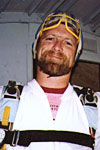
Time, it's set in Stone
Vasquez Rocks Natural Area Park, Agua Dulce, California, USA
June 22, 2009, high noon PDT (20:00 UTC)
© 2009 Pat Swovelin, All Rights Reserved.
What the heck is this thing we call time? It surrounds us from before we're born until the day we die yet we can't see it, hear it, taste it, feel it or smell it. None of our senses allow us to perceive it yet we move through it constantly as it rules our daily lives. We get up to it. We kowtow to it as we toil through the day. It tells us when to eat and when to sleep. It makes us lie (men stop aging at 39 and women at 29). There are different types of time; local time, Universal Time, Daylight Savings Time, island time, prison time, dinner time, idle time, sack time, play time, the time until Christmas (almost forever), geologic time, freefall time, nap time, night time, day time, summer time, game time, show time, free time, the time until you're old enough to get your drivers license and when you're in Elementary School, the last minute before summer is the longest minute of the year.
It's the 4th dimension. You can't measure it like you can the other 3 dimensions, so what can you do with it? Who knows. The Shadow knows ... but that's another story for another time.
There are all kinds of saying about time:
- My, how you kids have grown!
- It's time to take out the trash.
- Tempus fugit!
- I'll do it later, Mom.
- You want that today?
- Get up! You'll be late for school.
- Son, it's time you got a haircut.
- Time out.
- Time's up.
Even with all of that to draw on we still can't put a finger on it. Talk about frustrating!
Yet in places like this we can see the evidence of it. Hundreds of millions of years ago these rock formations were sand that was deposited at the bottom of an ocean. Eventually the water receded and over many millions of years and under incredible pressure, the seabed was turned into sandstone. Later still the tectonic plates shifted and the land rose and tilted (imagine what that was like) as a part of the San Andreas Fault (the boundary of the Pacific Plate and the North American Plate). Over time erosion took place and shaped the familiar rock formations you see today. Now what was at the bottom of an ocean is above the surrounding land and that land is, in turn, a half of a mile above the present-day ocean. Because of the erosion that's continually taking place the process is being repeated as the sandstone is weathered away to sand again and that sand is washed down the Santa Clara River to the Pacific Ocean.
The cycle continues anew.
Nowadays the area is called Vasquez Rocks, so named because Tiburcio Vásquez (a Mexican-American bandit in early California) used it as a hideout during the years 1873 and 1874. Visually spectacular the area has been used in countless movies, television shows and commercials. Think back and I'm sure you've seen the calvary riding to the rescue, the Indians attacking someone (good guys, bad guys, just plain folks) and bandits or dinosaurs or monsters or creatures-from-space lurking in and around the rocks waiting for the unwary (i.e., the idiot who knows there are bandits/Indians/dinosaurs/monsters/creatures-from-space in the area, hears something and oh-so-predictably says "Wait here and I'll check it out." You can scratch him off of the list-of-the-living without waiting for the inevitable, especially if it's a red-shirted crew member or a big-busted blonde.)
Lat: 34° 29' 9.46" N
Long: 119° 19' 47.62" W
Elevation: 2,500' MSL
Precision is: High. Pinpoints the exact spot.


 Tap or click the zoom icon in the bottom right corner of the picture to switch between in-page and fullscreen view
Tap or click the zoom icon in the bottom right corner of the picture to switch between in-page and fullscreen view